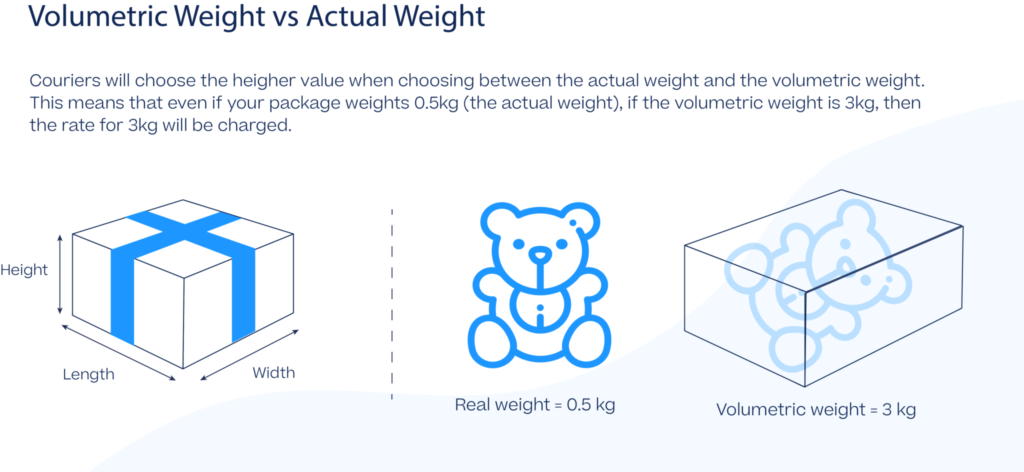Have you ever shipped a large box that seems to weigh nothing, yet the invoice you get is higher than you expected? This likely has to do with the difference between dimensional weight and actual weight. We all know how to find the actual weight of our international packages; we just look at the scale the box is sitting on and read the number. But why does my 10 lb shipment in a 12x12x12 inch box cost less than those same 10 lbs in a 24x24x24 inch box?
What is Billing Weight?
Billing weight, also known as chargeable weight, is the weight used to calculate the cost of shipping a package or freight. It is usually determined by the carrier and used to determine the shipping rate. The billing weight is typically greater than the actual weight of the package or freight, as it also takes into account the size of the package or freight.
Types of Billing Weights
There are two types of billing weights: deadweight and volumetric weight. Deadweight is the actual weight of the package or freight, while volumetric weight is determined by the size of the package or freight. As the size of the package or freight increases, the volumetric weight also increases.
What is Actual Weight?
When you place a package (with contents included inside) on a scale, and it returns the weight of that package in pounds (or kilograms), that is the actual weight of the package.
What is Dimensional Weight?
One can rightly assume that the box size has something to do with it, but what exactly? The term “Dimensional Weight” (or volumetric weight) is used to describe a box’s volume in relative pounds, which means a formula is used to convert its volume to pounds. That is then compared to the actual weight of the box that you see on the scale. It is an industry standard to bill a shipment by the highest weight; either actual or dimensional.
What is the difference between actual weight and volume weight?
The difference between actual weight and volumetric weight is that actual weight is the actual weight of the package or freight, while volumetric weight is determined by the size of the package or freight. Volumetric weight increases as the size of the package or freight increases.

How to Calculate Billing Weight
Calculating the billing weight of a package or freight is relatively simple. First, you need to determine the deadweight. This can be done by weighing the package or freight on a scale. Once you have the deadweight, you need to calculate the volumetric weight. This can be done by multiplying the length, width, and height of the package or freight. The greater of the two weights is the billing weight.

In conclusion, billing weight is an important factor to consider when it comes to shipping and logistics. Knowing what it is and how to calculate it can help save you time, money, and hassle. If you need help calculating the billing weight of your package or freight, reach out to us for assistance.

